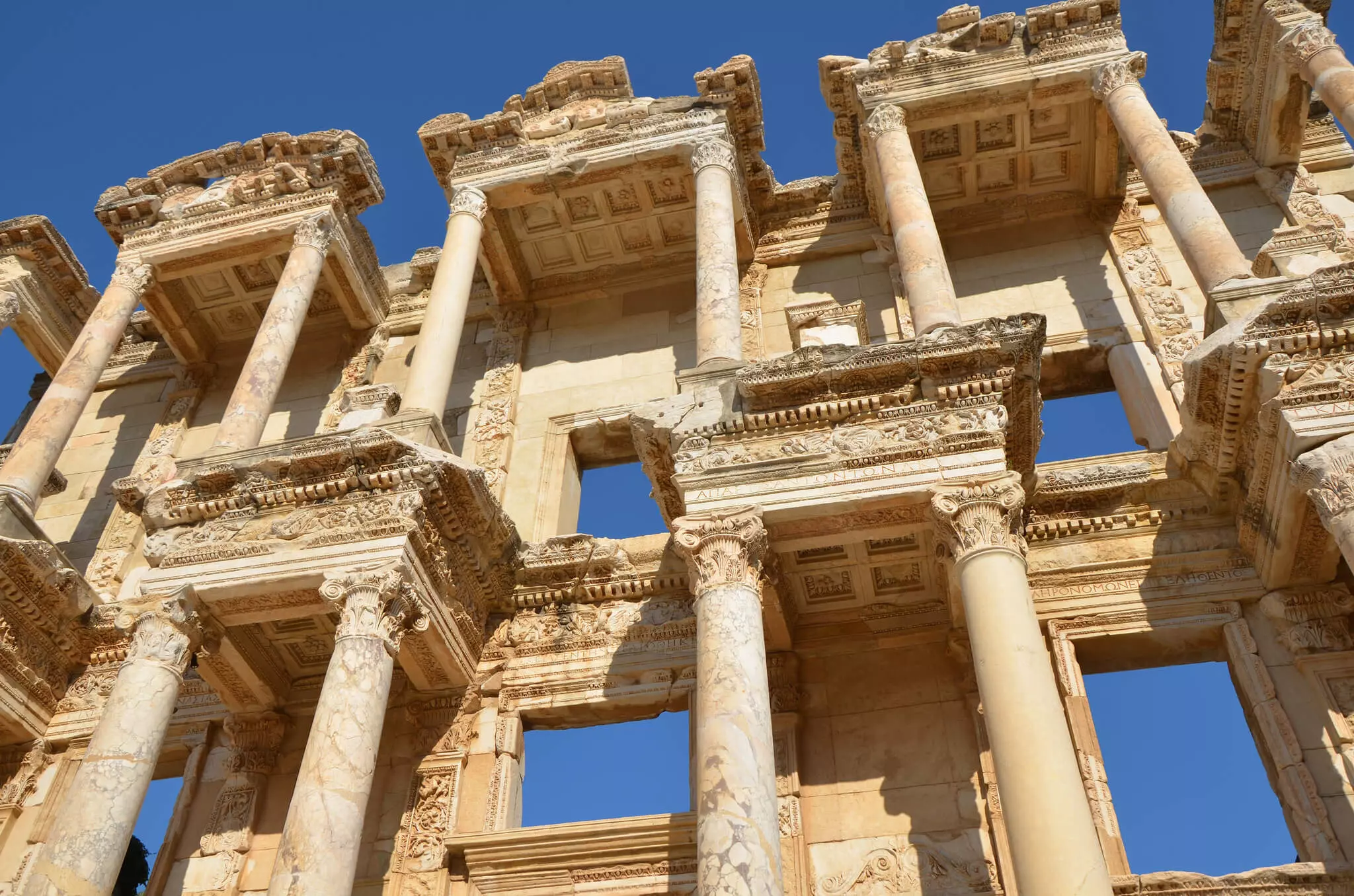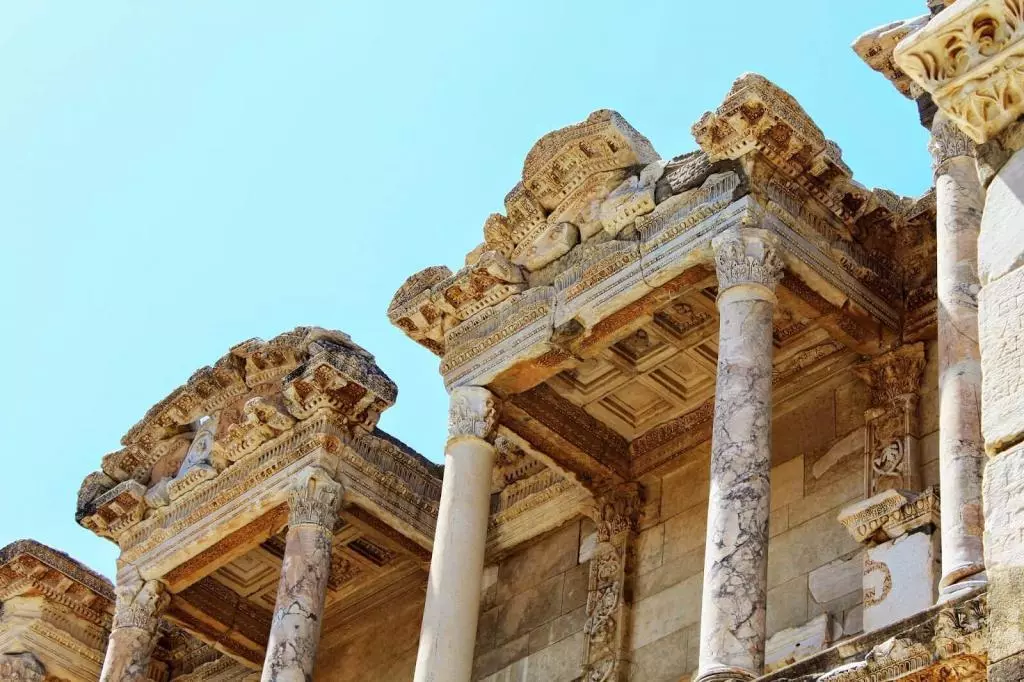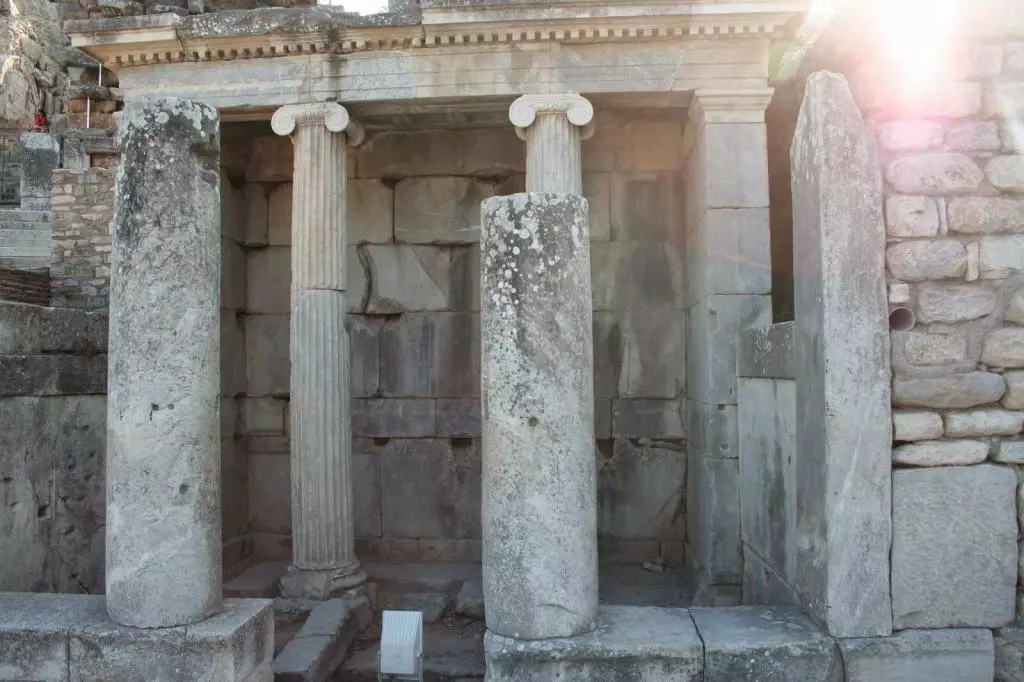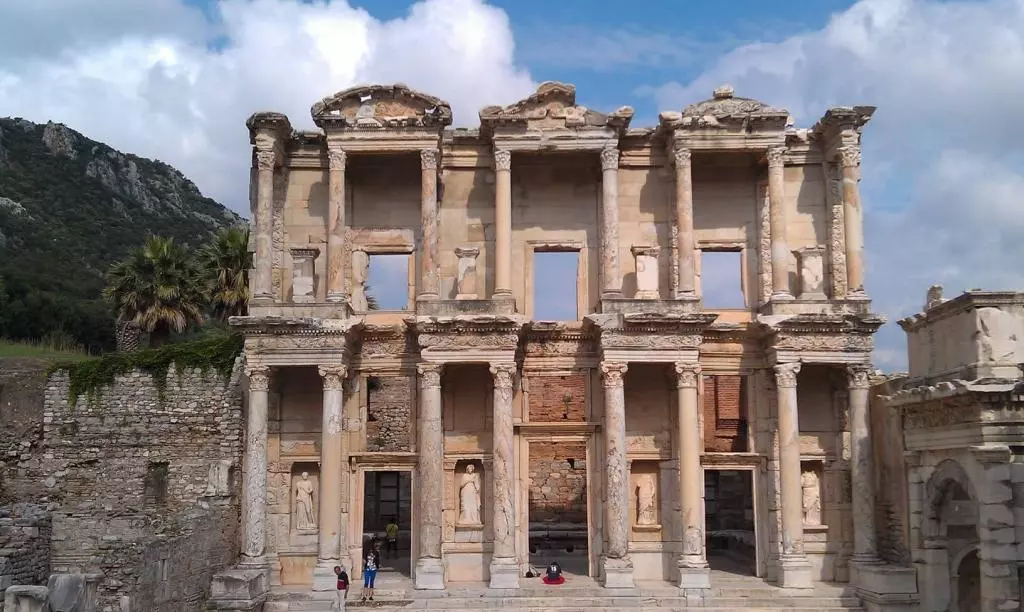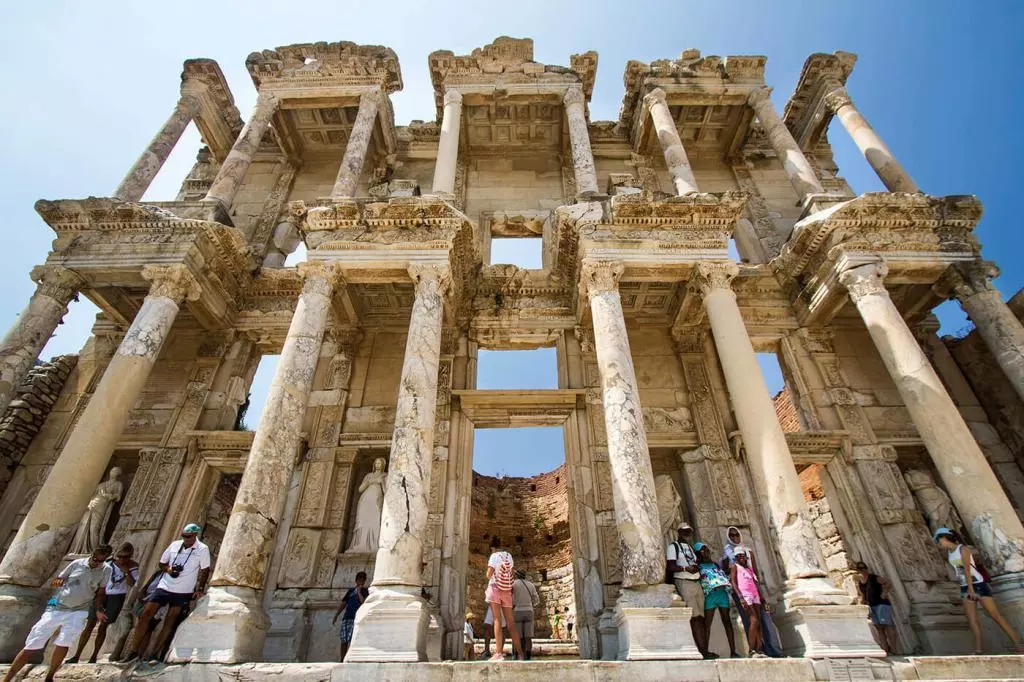The most well-known monument of the Ephesus Ancient City is the Celsus Library. It was located at the end of the Trade Agor, at the beginning of Kuretler Avenue; a small area was swept to the south-east by the city.
The Library was built by Gaius Iulius Aquila for his father, Senator Tiberius Iulius Celsus Polemaeanus, between 100 and 110 AD. The outer surface of the structure is made of marble with a 17 meters heights and 21 meters width. It is a two-storey building, and the Celsus Library has a magnificent view, especially with the sunrise.
Just in front of the entrance wall and in the basement, there are four sculptures and combined niches. Each column is covered with a 90-degree angle to these niches and forms in a rich fringe the facade is seemed with three windows on three doors. These three passages and the areas between them are limited to eight plasters on each floor. Doors and windows carry superstructures. The superstructural elements make four corner folds in and out between the first floor doors and sides. Columns carrying the top building on the first floor bring the Tabernak. Therefore, the free spaces between the gates are decorated with niches with sculptures.
There are three niches on the north and south walls of the library and four on the west wall. These niches are 50 cm. depth, 280 cm. height and 100 cm width. The interior of the niches is plastered with lime and the surroundings are covered with marble tiles. The main hall has a two-storey gallery with niches that turn into horseshoes. The blended architecture of the Celsus Library is considered by the public not only as a product of Greek or Roman civilization but as a modern, expensive and theatrical hero.
The library has three gateways and a narrow space in front of it and opens to the reading hall in a surprising way. The hall of the library is entered from entering a marble courtyard and then 9 steps. The inner wall is separated from the outer wall by a corridor in order to prevent moisture and therefore books from being dampened. This corridor has reached the hall all around. Some are called podiums according to researchers. The purpose of the corridor was to leave a space between the reader and the books. Some researchers have stated that they are made for aesthetic purposes.
There is also a sarcophagus in the library that still preserves its inside. According to the searches the founder of Celsus buried in this sarcophagus. Also, on the lower floor of the outside of the library, there were four female sculptures representing wisdom, virtue, knowledge, and understanding. The origins of these sculptures are on the Vienna Museum.
It is known that books are provided in Roman libraries through donations and inheritance. The Celsus Library was also built by Aquila Celsus in honor of his father and his donations. Aquila has inherited 25,000 golds for the preservation of the library and for the purchase of books. This is one of the most important examples of how to book through the heritage of the Roman world. It is a matter of fact that the public libraries of Rome have developed through a foundation that has built the building. The Celsus Library is an example of libraries established as foundations. It is estimated that there are approximately 9,500 to 12,000 book rolls in the library.

